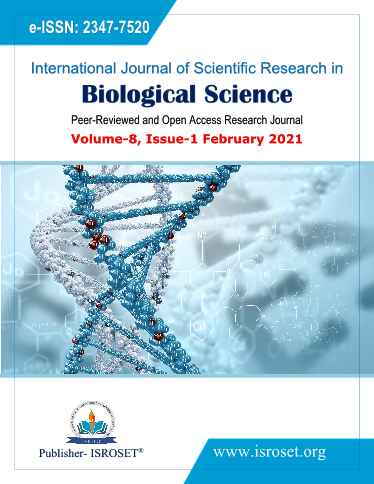Lung Detection and Segmentation for Cancer Diagnosis in Machine Learning Approach
Keywords:
Computer Assisted Diagnosis, Medical Image Recognition, Growing Region, SegmentationAbstract
Segmentation is a significant advance in the handling and grouping of clinical images for radiological or computer supported diagnostics. All in all, to analyze the condition, the lung CT CAD (Computer-Aided Diagnosis) first isolates the district of concern (lung) and afterward dissects the knob location zone independently acquired. By permitting the utilization of magnificent correlations among air and encompassing tissues, regular lungs can be portioned. Nonetheless, this strategy bombs where the lung pathology is influenced by high thickness. Thick pathologies are found in around one-fifth of the clinical sweeps, and it is significant that the total and impeccably lung a piece of the image is seen and that no portion is destroyed as present in the first image for computer assessment, for example, the distinguishing proof and measurement of obsessive districts. In this paper, we recommended a lung division method that effectively isolates lung tissues from lung CT check images.
References
M. A. Khawaja, Muhammed Zaheer Aziz, Nadeem Iqbal, “Effectual Lung Segmentation for CAD Systems Using CT Scan Images”, Proceedings of IEEE, INMIC Conference, FAST Lahore, 2004.
Robin N. Strickland, “Image Processing Techniques for Tumor Detection”, Marcel Dekker Inc. New York,2002.
R Wicmker PhD, P. Rogalla MD, T Blaffert PhD, “Aspects of Computer-aided detection (CAD) and volumetry ofpulmonary nodules using multislice CT”, The British Journal of Radiology (BJR), vol. 78, pp. 46-56,2005.
Malin Dollinger, “Every one’s Guide to Cancer therapy; How Canc er is Diagnosed, Treated and Manged”, 4th Edition, Andrews McMeel Publishing Kansas, USA,2002.
Atam P. Dhawan, “Medical Image Analysis”, IEEE press series in BiomedicalEngineering,JohnWiley&Sons.Inc.Publications,2003.
Jadwiga Kogowska, “Overview and Fundamental of Medical Image Segmentation”, Hand Book of Medical Imaging, Academic Press, San Diego, pp. 69-85,2000.
Samuel G. Armato III, Maryellen L. Giger and Catherine J. Moran, “Computerized Detection of Pulmonary Nodules on CT Scans”, RadioGraphics, vol. 19, pp. 1303-1311,1999.
Julian Kerr, “The TRACE method for Segmentation of Lungs from Chest CT images by Deterministic Edge Linking”, University of New South Wales, Department of Artificial Intelligence, Australia, May 2000.
Shiying Hu, Eric A.Huffman, and Joseph M. Reinhardt, “Automatic Lung Segementation for Accurate Quantitiation of Volumetric X-Ray CT images”, IEEE Transactions on Medical Imaging, vol. 20, No. 6, June2001.
Riccardo Boscolo, Mathew S. Brown, Michael F. McNitt-Gray, “Medical Image Segmentation with Knowledge-guided Robust Active Contours”, Radiographics, vol. 22, pp. 437-448,2002.
Ayman El-Baz, Aly A. Farag, Ph.D., Robert Falk, M.D. and Renato La Rocc,” Detection, Visualization, and Identification of Lung Abnormalities in Chest Spiral CT Scans: Phase 1”, International ConferenceonBiomedicalEngineering,Cairo,Egypt,12-1-2002.
Binsheng Zhao, Gordon Gamsu, Michelle S. Ginsberg, “Automatic detection of small lung nodules on CT utilizing a local density maximumalgorithm”,JournalofAppliedClinicalMedicalPhysics,vol. 4, No. 3, summer2003.
Ayman El-Baz, Aly A. Farag, Ph.D., Robert Falk, M.D. and Renato La Rocc,” A unified approach for detection, visualization, and identification of lung abnormalities in chest spiral CT scans”, proc. Computer Assisted Radiology and Surgery, London,2003.
Shu-Yen Wan, William E. Higgins, “Symmetric Region Growing”, IEEE Transactions on Image Processing, Vol.12, No.8 August 2003.
Downloads
Published
How to Cite
Issue
Section
License

This work is licensed under a Creative Commons Attribution 4.0 International License.
Authors contributing to this journal agree to publish their articles under the Creative Commons Attribution 4.0 International License, allowing third parties to share their work (copy, distribute, transmit) and to adapt it, under the condition that the authors are given credit and that in the event of reuse or distribution, the terms of this license are made clear.







